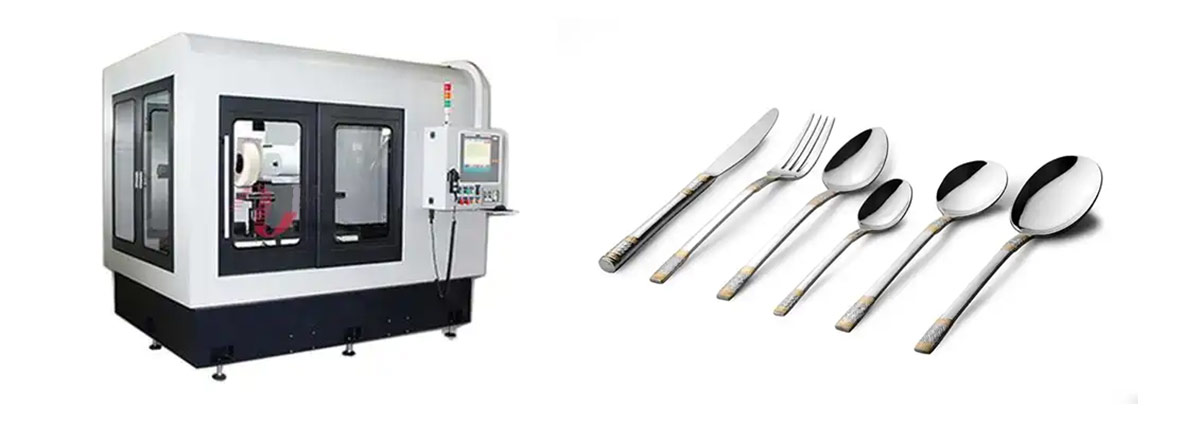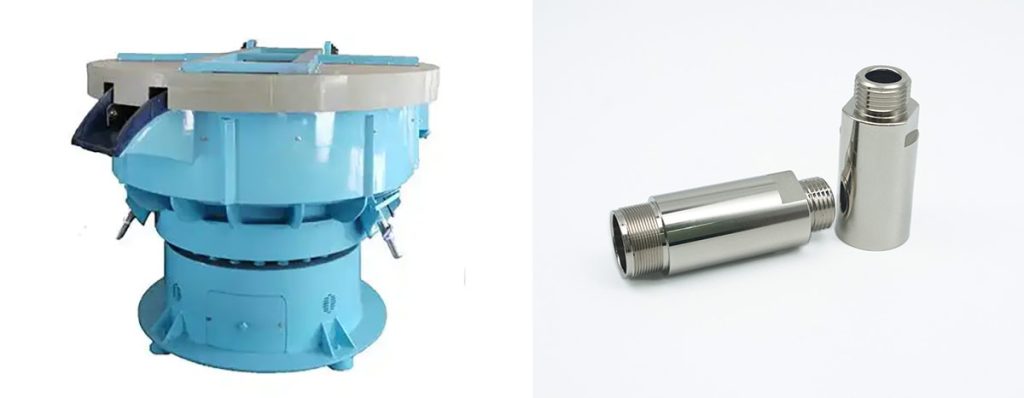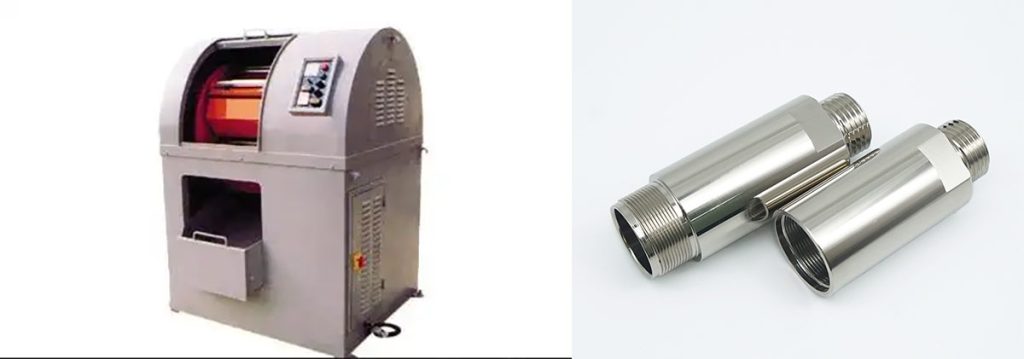

Digital simulation technology transforms the way metal polishing equipment is designed and optimized. It enables engineers to create virtual prototypes, analyze stress factors, and refine processes without relying on costly physical trials. For instance, Brent Stucker from ANSYS highlights that simulation prevents unnecessary expenses by reducing build failures, saving significant development costs. Similarly, Aaron Frankel from Siemens notes that eliminating high failure rates in 3D printing enhances economic efficiency. By identifying defects like porosity, as explained by Allyce Jackman of Flow Science, simulation ensures higher-quality prototypes. This innovative approach not only improves precision but also accelerates the design process.
Key Takeaways
- Digital simulation helps engineers make virtual models. This lowers the need for expensive physical tests and saves money.
- Simulation improves accuracy by spotting problems early. This ensures better prototypes and stronger performance.
- With simulation, manufacturers can improve processes. This reduces delays and boosts efficiency in many industries.
- Simulation predicts when equipment might break. This reduces downtime and helps metal polishing tools last longer.
- By solving old design problems, simulation helps create new and advanced tools that meet industry needs.
Overview of Digital Simulation Technology
What Is Digital Simulation?
Digital simulation refers to the use of computer-based models to replicate real-world processes and systems. In metal polishing equipment, it allows engineers to test and refine designs virtually before physical production begins. This approach eliminates the need for costly trial-and-error methods. By simulating polishing dynamics, engineers can predict how materials will behave under specific conditions. For example, they can analyze the effects of pressure, velocity, and tool geometry on material removal rates. This predictive capability ensures that the final design meets performance requirements with minimal adjustments.
Core Principles of Digital Simulation in Engineering
Several scientific principles form the foundation of digital simulation in metal polishing equipment. These include:
- The Preston equation, which establishes a relationship between material removal, pressure, and velocity, is critical for understanding polishing dynamics.
- Finite element simulations provide detailed insights into stress distributions and contact areas during polishing. These analyses help optimize equipment design for durability and efficiency.
- Experimental validations confirm the impact of variables like spindle speed and inflation pressure on material removal rates. This data ensures that simulations align with real-world outcomes.
By applying these principles, engineers can create designs that are both precise and efficient. This process reduces the likelihood of errors and enhances the overall reliability of the equipment.
Role of Simulation in Modern Manufacturing
Simulation plays a transformative role in modern manufacturing. It streamlines processes, reduces costs, and improves product quality. Across industries, its impact is evident. For instance, aerospace companies report a 25% reduction in production bottlenecks, while pharmaceutical manufacturers achieve a 40% improvement in batch scheduling. Consumer goods industries experience a 20% decrease in changeover times. These improvements highlight the versatility of simulation in addressing diverse manufacturing challenges.
| Industry | Impact on Efficiency |
|---|---|
| Aerospace | 25% reduction in production bottlenecks |
| Pharmaceuticals | 40% improvement in batch scheduling |
| Consumer goods | 20% decrease in changeover times |
| Overall Benefits | 30-40% reduction in project planning time |
| Significant decrease in implementation risks | |
| Enhanced quality control through virtual testing | |
| Improved resource utilization across production lines | |
| Simulation Testing | 22% throughput improvement |
| Achieved ROI within six months | |
| Saved an estimated 40% in project time compared to traditional methods. |
In metal polishing service, simulation ensures optimal resource utilization and faster development cycles. It also enhances quality control by identifying potential defects early in the design phase. These benefits make simulation an indispensable tool for modern manufacturers.
Challenges in Metal Polishing Equipment Design
Common Issues in Traditional Design Methods
Traditional design methods for metal polishing equipment often face several challenges. These methods frequently generate excessive waste, which increases production costs and environmental concerns. Inefficient waste management systems exacerbate this issue, making it difficult to maintain sustainable operations. Additionally, fluid contamination is a recurring problem. Contaminants such as debris or trash compromise the performance of polishing fluids, leading to inconsistent results. Poor housekeeping practices further aggravate this issue, reducing the overall efficiency of the equipment.
Another significant challenge lies in cleaning processes. Inefficient cleaning methods fail to address contamination effectively, which impacts the quality of the final product. This highlights the need for better training programs and improved equipment designs to streamline cleaning operations. The table below summarizes these common issues:
| Issue | Description |
|---|---|
| Waste Management | Traditional methods often lead to significant waste generation, necessitating better waste minimization strategies. |
| Fluid Contamination | Contaminants like trash can compromise fluid performance, highlighting the need for improved housekeeping. |
| Cleaning Processes | Inefficient cleaning processes can exacerbate contamination issues, suggesting a need for better training and equipment design. |
Limitations of Physical Prototyping

Physical prototyping, while essential in traditional design, has several limitations. It is time-consuming and expensive, often requiring multiple iterations to achieve the desired results. This process delays production timelines and increases costs. Furthermore, physical prototypes cannot always replicate real-world conditions accurately. This limitation makes it difficult to predict how the equipment will perform under various operating conditions. Simulation offers a solution by enabling virtual testing and optimization, reducing reliance on physical prototypes.
The Need for Precision and Efficiency in Polishing Processes
Precision and efficiency are critical in metal polishing. Modern equipment must accommodate diverse tasks, from detailed work on small parts to heavy-duty industrial applications. Machines with adjustable speeds and advanced control systems allow operators to achieve consistent quality. For example, orbital polishing machines provide smooth finishes ideal for high-gloss surfaces, while automated systems enhance efficiency by handling repetitive tasks. The table below highlights the importance of various machine features:
| Feature/Type of Machine | Importance for Precision and Efficiency |
|---|---|
| Adjustable Speed | Enables precise control for different finishes. |
| Abrasive Options | Offers flexibility for various polishing tasks. |
| Bench Polishing Machines | Ideal for detailed work on small to medium-sized parts. |
| Floor Polishing Machines | Suitable for heavy-duty tasks in industrial settings. |
| Orbital Polishing Machines | Provides a smooth finish, ideal for high gloss surfaces. |
| Rotary Polishing Machines | Effective for both coarse and fine polishing tasks. |
| Vibratory Polishing Machines | Efficient for bulk processing in industrial applications. |
| Automated Polishing Systems | Enhances efficiency by automating repetitive tasks. |
| Advanced Control Systems | Allows for real-time monitoring and adjustments for consistent quality. |
By addressing these challenges, manufacturers can improve the design and performance of metal polishing equipment, ensuring better outcomes and higher efficiency.
Applications of Digital Simulation in Metal Polishing Equipment
Virtual Prototyping for Design Validation
Virtual prototyping allows engineers to test and refine designs in a digital environment before creating physical models. This approach eliminates the need for costly and time-consuming physical prototypes. Engineers can simulate the behavior of metal polishing equipment under various conditions, such as different speeds, pressures, and material types. By doing so, they can identify potential flaws and make necessary adjustments early in the design process.
For example, virtual prototyping enables the evaluation of tool geometry and its impact on polishing efficiency. Engineers can test multiple configurations to determine the most effective design without wasting materials. This method ensures that the final product meets performance standards while reducing development time. Additionally, virtual prototypes provide a visual representation of the equipment, making it easier to communicate design concepts to stakeholders.
Stress and Performance Analysis
Stress and performance analysis is a critical application of simulation in metal polishing equipment. Engineers use simulation tools to evaluate how the equipment will perform under different operating conditions. This analysis helps identify areas of high stress that could lead to wear or failure over time. By addressing these issues during the design phase, manufacturers can improve the durability and reliability of their equipment.
Finite element analysis (FEA) is a common technique used for stress analysis. It divides the equipment into smaller sections, or elements, and calculates the stress distribution across these elements. This detailed insight allows engineers to optimize the design for better performance. For instance, they can adjust the thickness of certain components to reduce stress concentrations. This process not only enhances the equipment’s lifespan but also ensures consistent polishing results.
Process Optimization for Enhanced Efficiency
Process optimization is one of the most significant benefits of digital simulation. By analyzing various parameters, such as material removal rates and tool wear, engineers can fine-tune the polishing process for maximum efficiency. Simulation enables them to test different scenarios and identify the optimal combination of settings.
Several measurable improvements demonstrate the effectiveness of simulation-based optimization techniques:
- Grain size of cast rings reduced from 74 μm to 56 μm.
- Microshrinkage porosity decreased from grade 4 to grade 2.
- Optimized IN718 rings exhibited a ductility of 22.1% elongation.
These results highlight how simulation can enhance the quality of polished materials while minimizing waste. Furthermore, process optimization reduces energy consumption and operational costs. Automated systems, guided by simulation data, can adjust parameters in real-time to maintain optimal performance. This capability ensures that metal polishing equipment operates at peak efficiency, delivering consistent and high-quality results.
Simulation for Predictive Maintenance
Predictive maintenance leverages simulation to anticipate equipment failures before they occur. This approach minimizes downtime and extends the lifespan of metal polishing equipment. By analyzing operational data and simulating wear patterns, engineers can identify potential issues early and implement corrective measures.
One of the key benefits of simulation in predictive maintenance is its ability to model real-world conditions. Engineers can simulate the effects of prolonged use, varying workloads, and environmental factors on equipment performance. For instance, they can predict when a polishing tool might wear out or when a motor may require servicing. This foresight allows manufacturers to schedule maintenance activities proactively, avoiding unexpected breakdowns.
Tip: Predictive maintenance not only reduces repair costs but also enhances overall productivity by ensuring equipment operates at peak efficiency.
Simulation tools also enable the optimization of maintenance schedules. Traditional maintenance often relies on fixed intervals, which may lead to unnecessary servicing or overlooked issues. With simulation, engineers can create dynamic maintenance plans based on actual equipment usage and performance data. This approach ensures that resources are allocated efficiently, reducing waste and improving cost-effectiveness.
Another advantage of simulation-based predictive maintenance is its role in enhancing safety. Faulty equipment poses significant risks to operators and the production process. By identifying potential failures in advance, simulation helps mitigate these risks. For example, engineers can simulate stress points in a polishing machine to determine if any components are at risk of failure. Addressing these vulnerabilities before they escalate ensures a safer working environment.
The integration of simulation with advanced technologies like IoT and machine learning further enhances predictive maintenance capabilities. IoT sensors collect real-time data from metal polishing equipment, while machine learning algorithms analyze this data to identify patterns and anomalies. Simulation then uses these insights to predict future performance and maintenance needs. This combination of technologies creates a robust system for maintaining equipment reliability.
| Predictive Maintenance Benefits | Description |
|---|---|
| Reduced Downtime | Identifies issues early, preventing unexpected equipment failures. |
| Cost Savings | Minimizes repair costs by addressing problems before they escalate. |
| Enhanced Safety | Mitigates risks by identifying and resolving potential hazards. |
| Optimized Maintenance Schedules | Ensures servicing occurs only when necessary, improving resource utilization. |
| Extended Equipment Lifespan | Prolongs the life of components through timely maintenance and optimization. |

Conclusion
Digital simulation transforms the development of metal polishing equipment by enhancing precision and efficiency. It eliminates traditional design challenges, such as waste and inefficiency, while enabling manufacturers to innovate. Engineers use simulation to refine processes, optimize performance, and predict maintenance needs. These advancements reduce costs and improve reliability. As manufacturing evolves, simulation will remain essential for creating cutting-edge equipment that meets industry demands.
